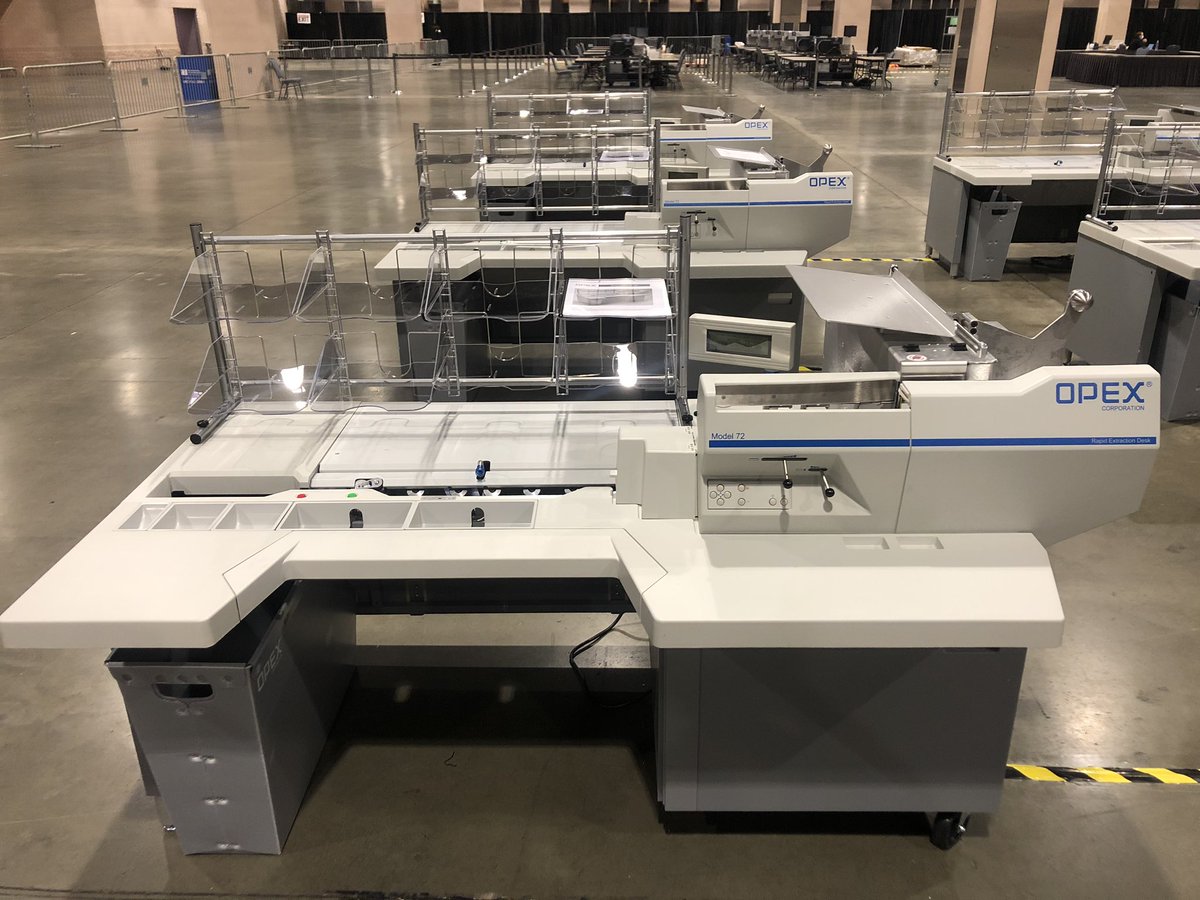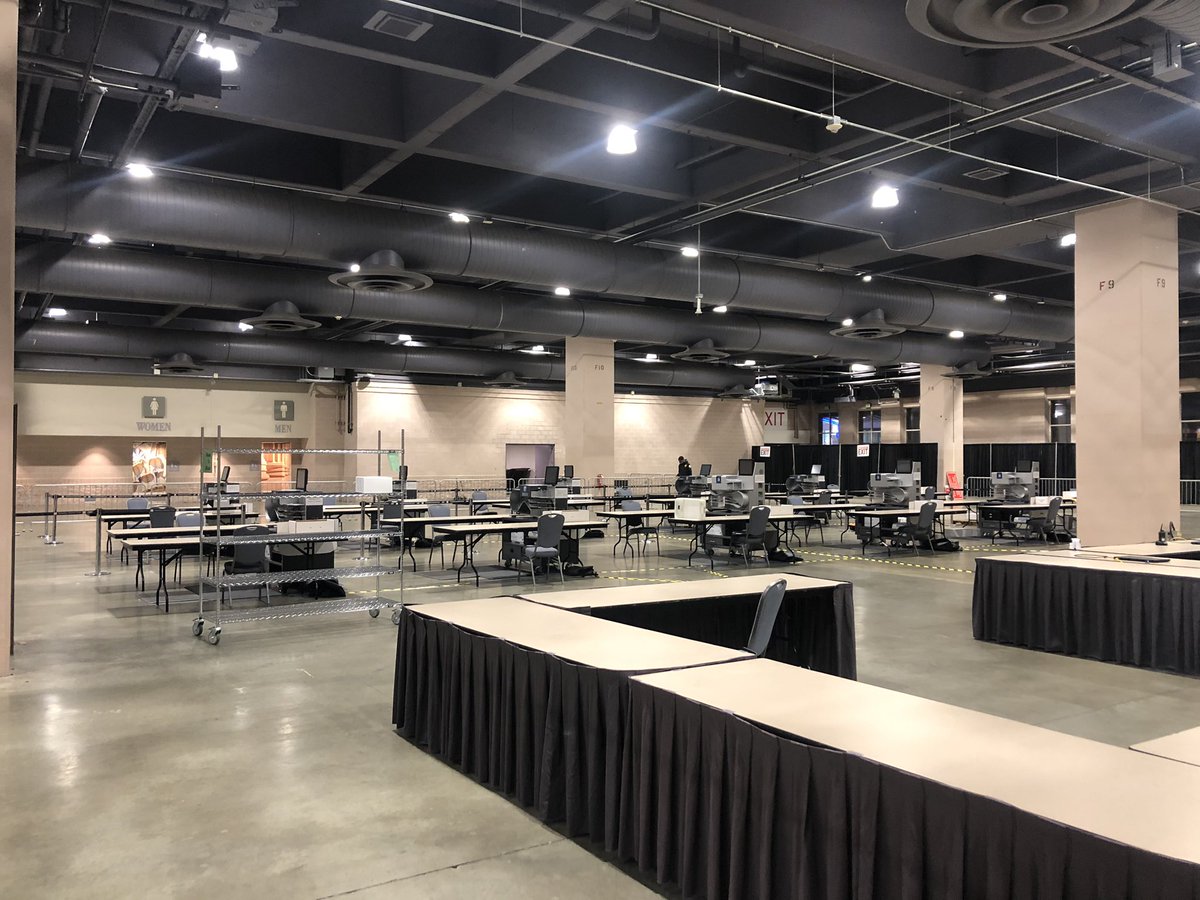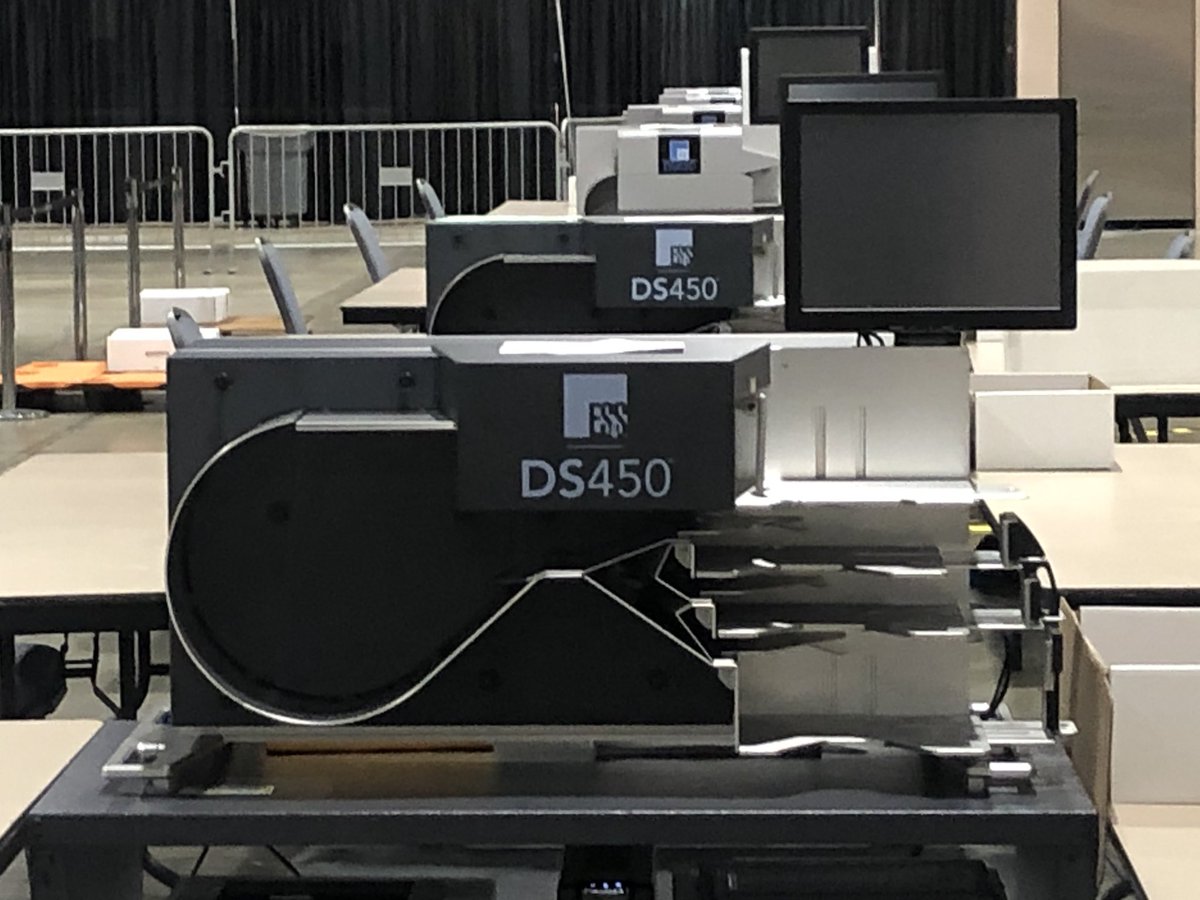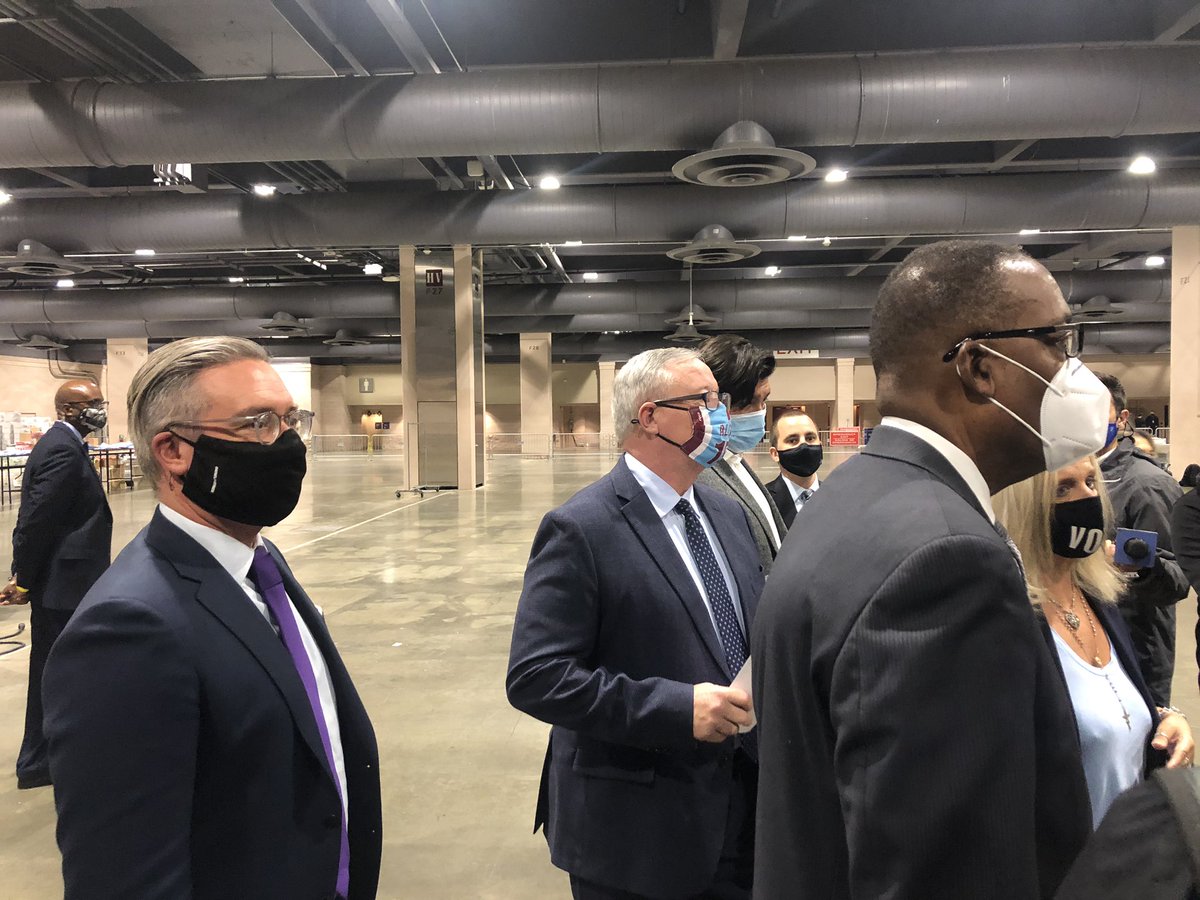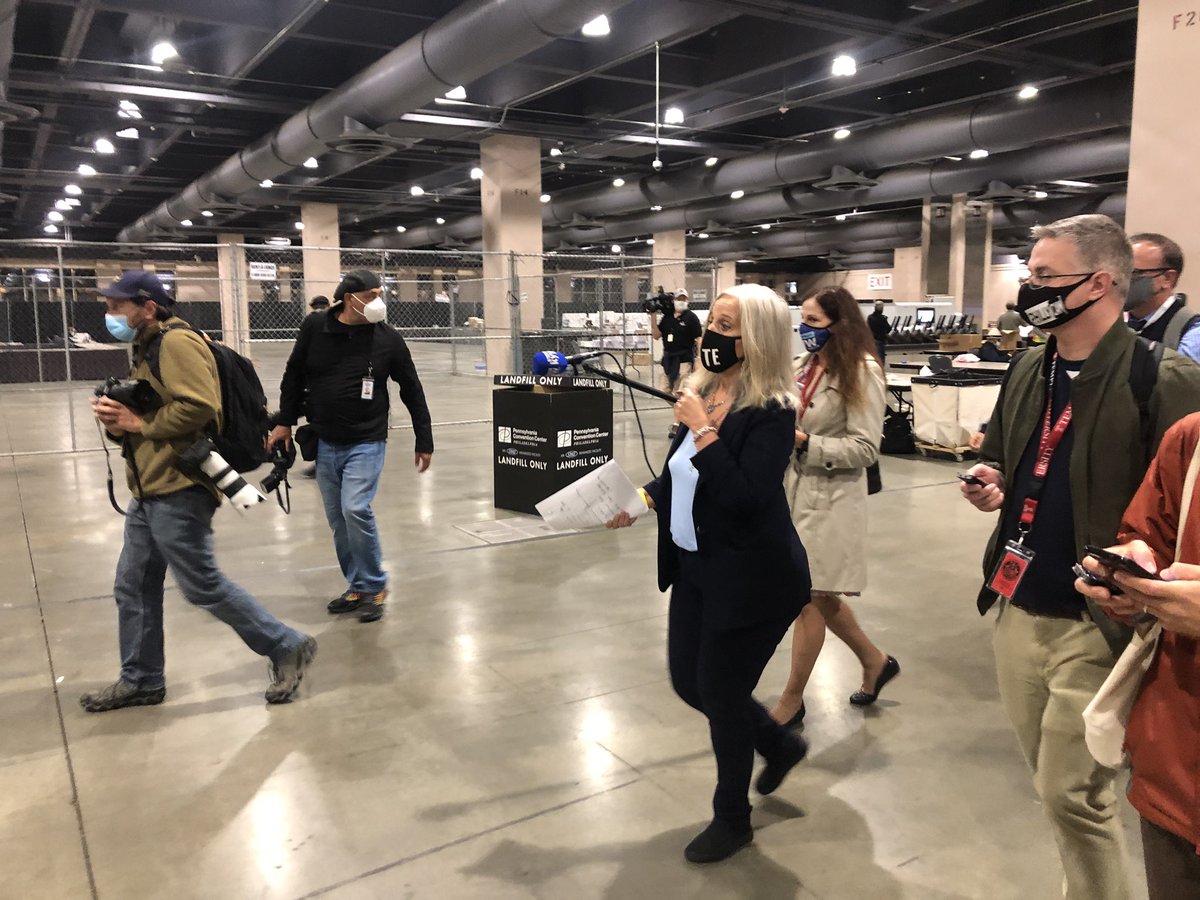On a press tour of Philadelphia’s ballot processing equipment in a 125,000-square-foot, heavily guarded warehouse in the city’s Convention Center.
This is step 1: the sorting machine, where mail ballots are first received in the county. This does not read the actual vote.
This is step 1: the sorting machine, where mail ballots are first received in the county. This does not read the actual vote.
Step 2: the “extractor.” There will be 22 of these OPEX machines, which perform a two step process to extract ballots, first from the outside envelope and then from the inner “secrecy” envelope.
Each device is capable of extracting 12,000 ballots an hour.
Each device is capable of extracting 12,000 ballots an hour.
Extraction is the “bottleneck point” in the process of counting ballots, most likely to slow things down.
Step 3 is tabulation: after each ballot is removed, it goes to these 12 machines that will actually tally the votes cast beginning at 7 a.m. on Election Day.
Step 3 is tabulation: after each ballot is removed, it goes to these 12 machines that will actually tally the votes cast beginning at 7 a.m. on Election Day.
This is all brand new equipment, save for three tabulation machines used in the primary. It’s largely funded by $10 million grant to the City Commissioners, the bipartisan elected office that runs the county elections.
Circling back to the beginning here with ballot printing:
Circling back to the beginning here with ballot printing:
Brace yourself: You’re looking at 265,000 mail ballots locked behind this fence. If you voted by mail ballot, your ballot is likely here. It’s been marked as received (step 1) by a bar code but it won’t be extracted and rallied until Nov. 3.
Here I’m talking with @SethBluestein:
Here I’m talking with @SethBluestein:
*tallied, obviously.
Some officials from City Council and Mayor Jim Kenney’s office came along for the tour as well. Everyone I’ve spoken with says they’re impressed with the machinery, staff and security at the Convention Center.
Some officials from City Council and Mayor Jim Kenney’s office came along for the tour as well. Everyone I’ve spoken with says they’re impressed with the machinery, staff and security at the Convention Center.
This is just a paper shredder, but it looks cool.
Appending this correction to the earlier tweet about extractors https://twitter.com/maxmmarin/status/1320784173456674817">https://twitter.com/maxmmarin...

 Read on Twitter
Read on Twitter